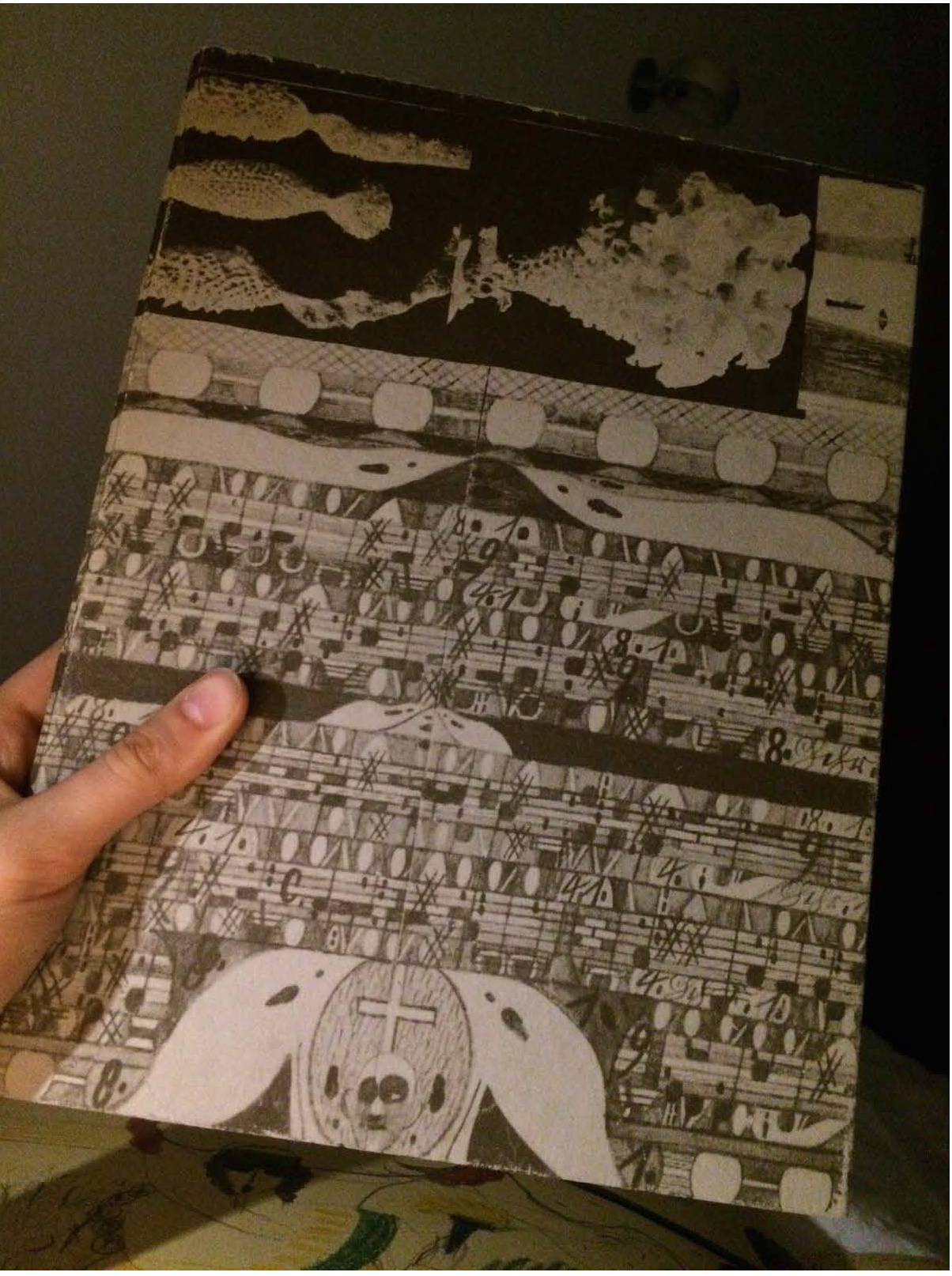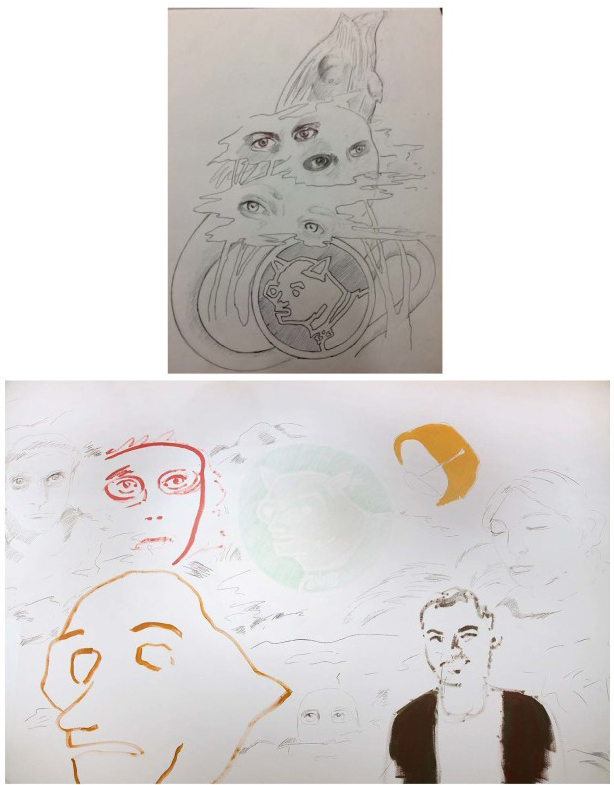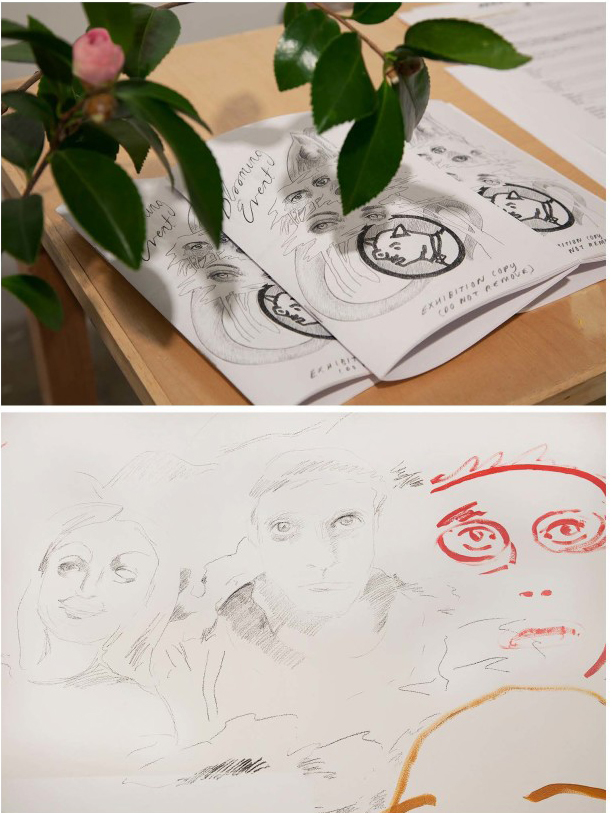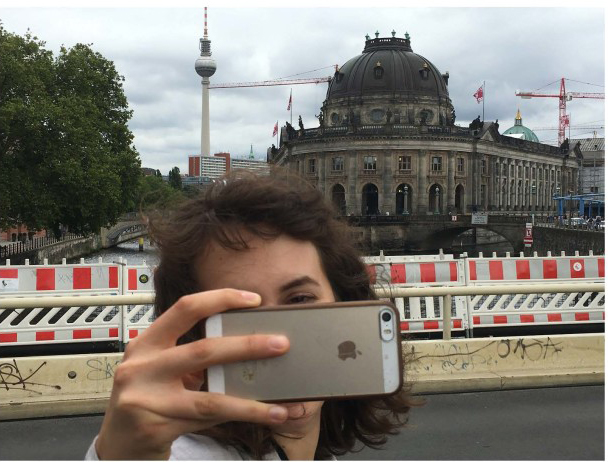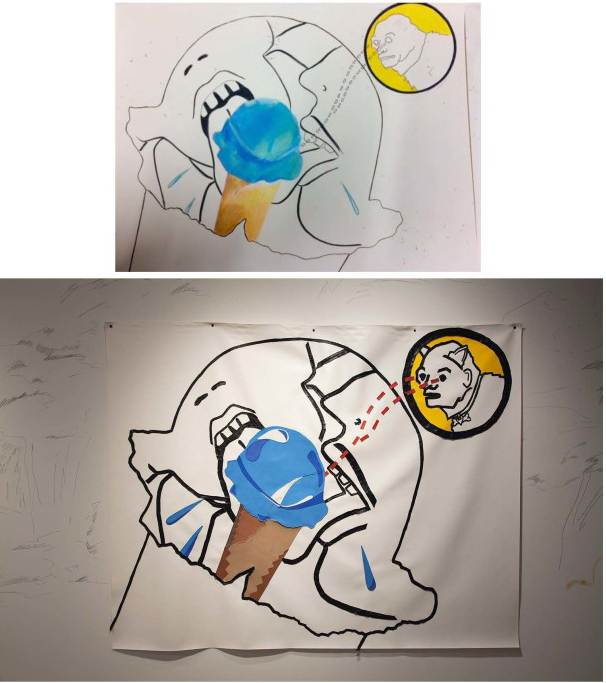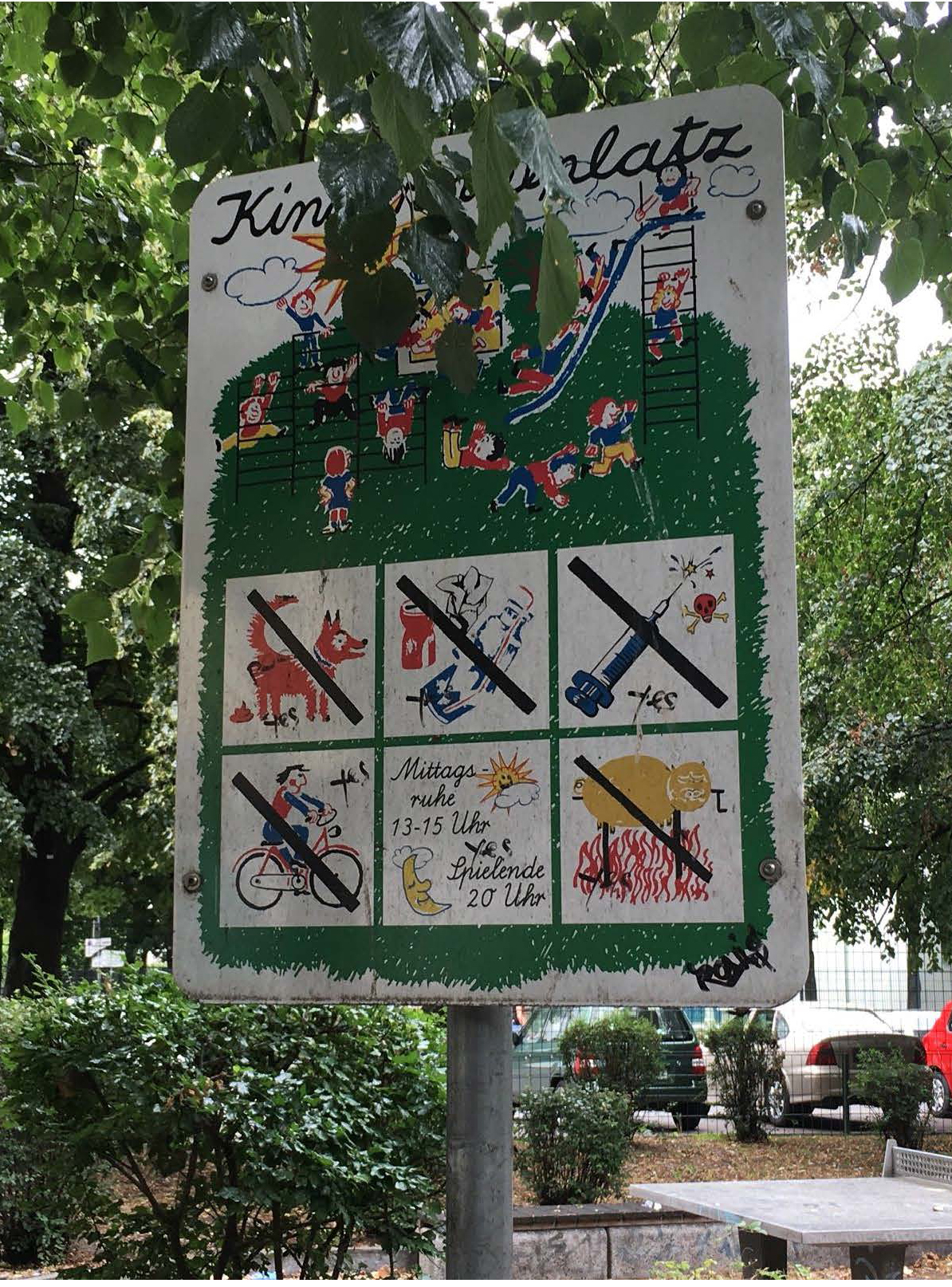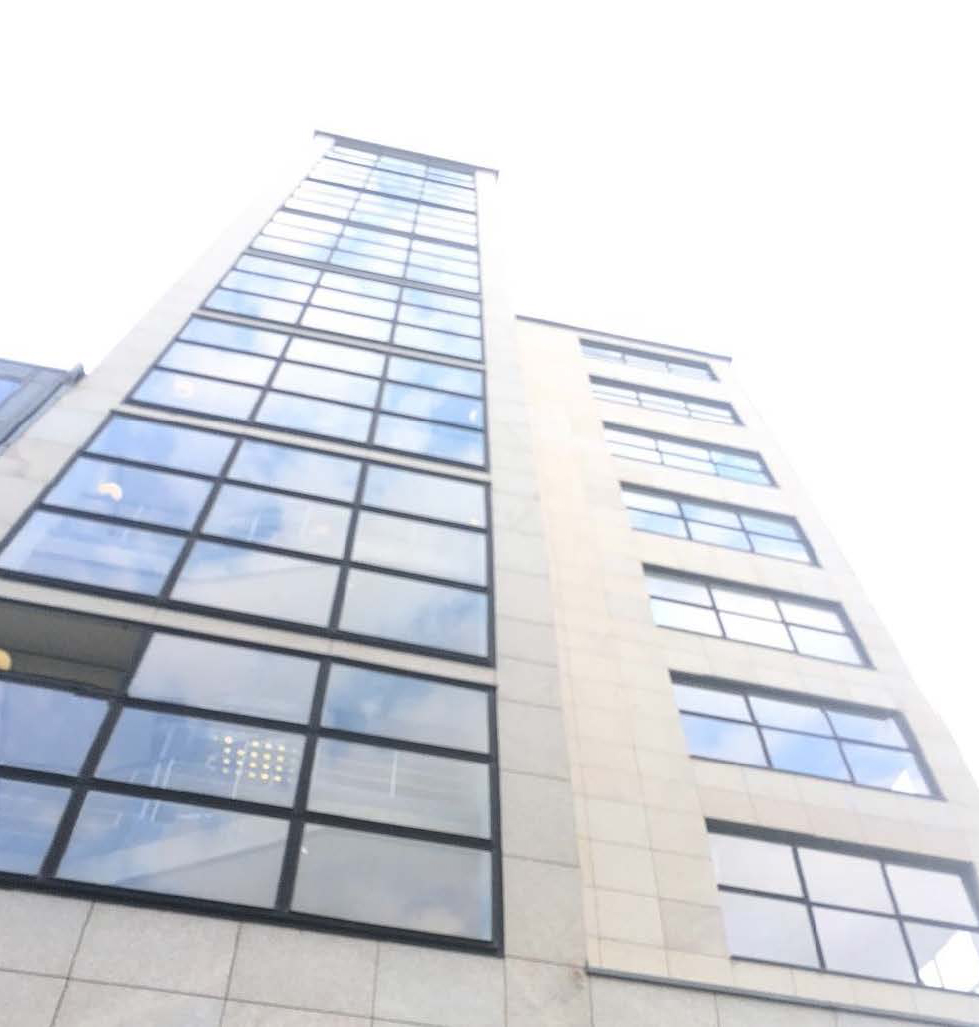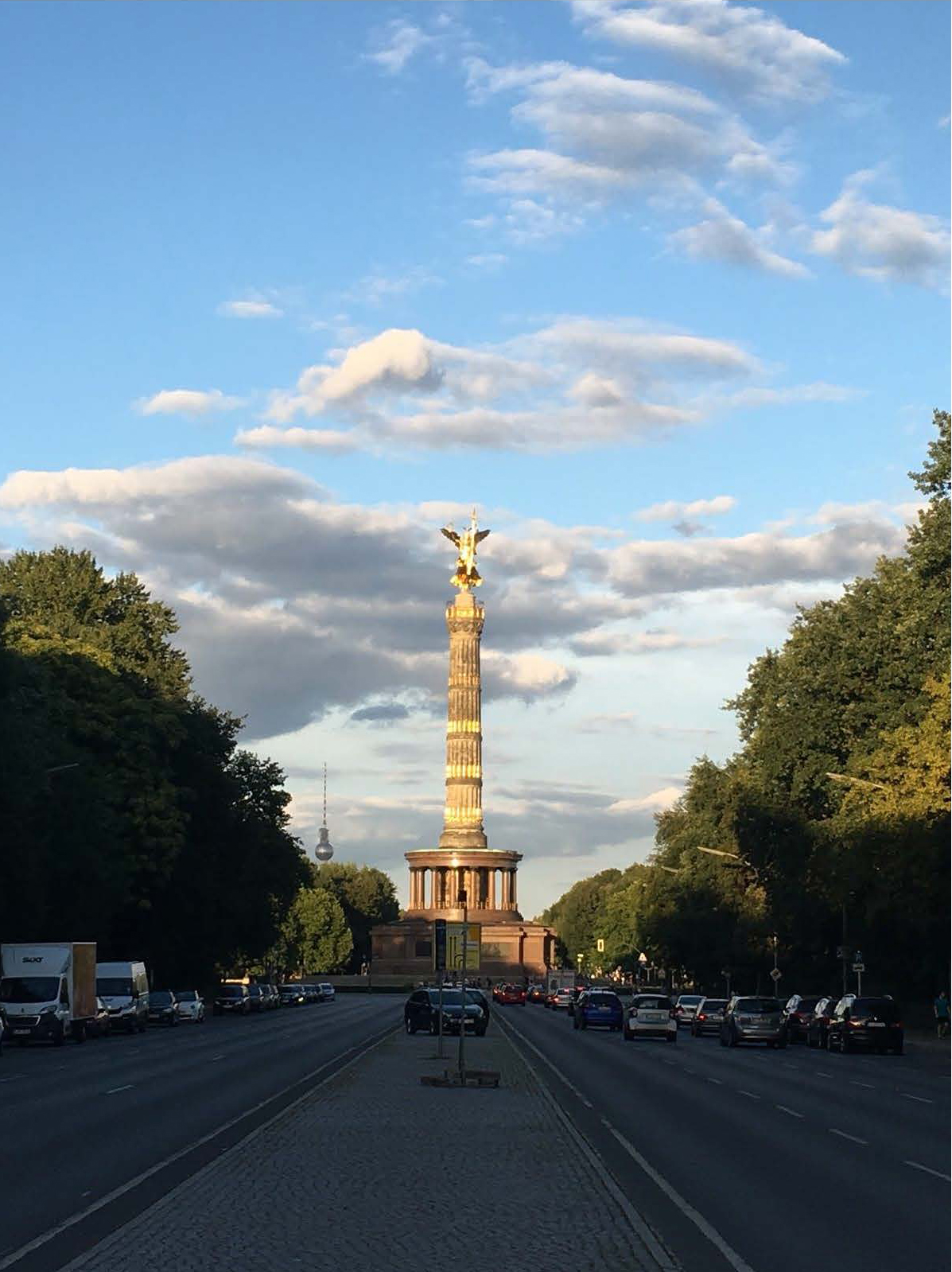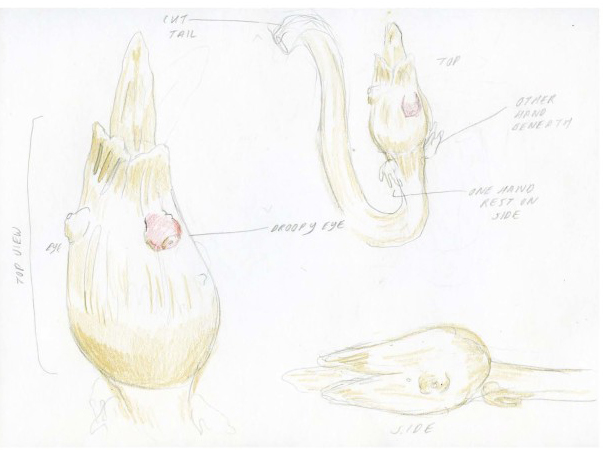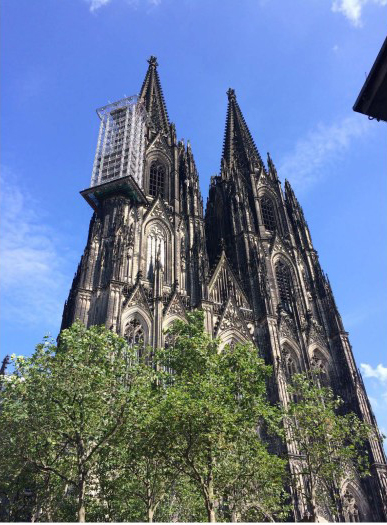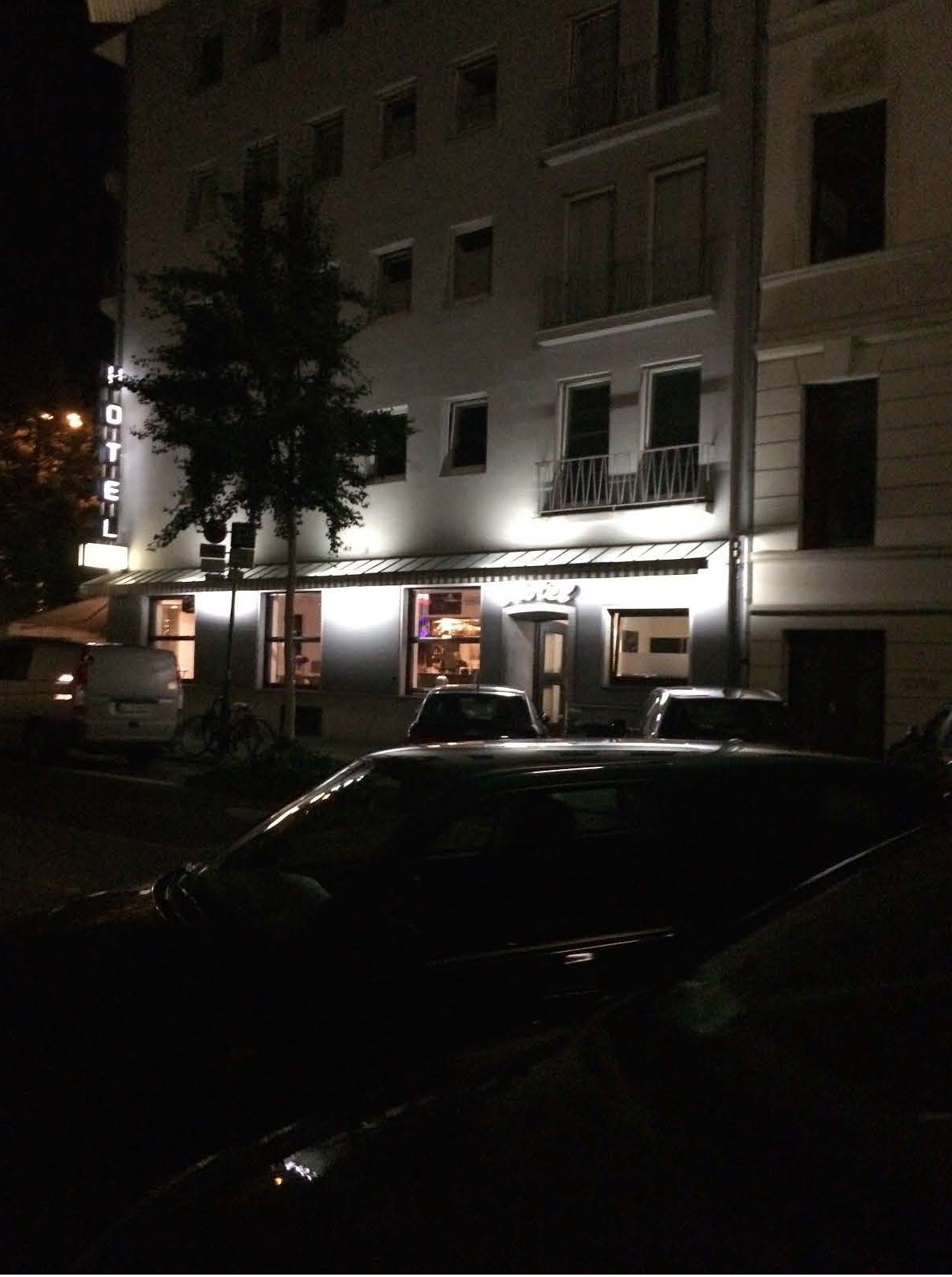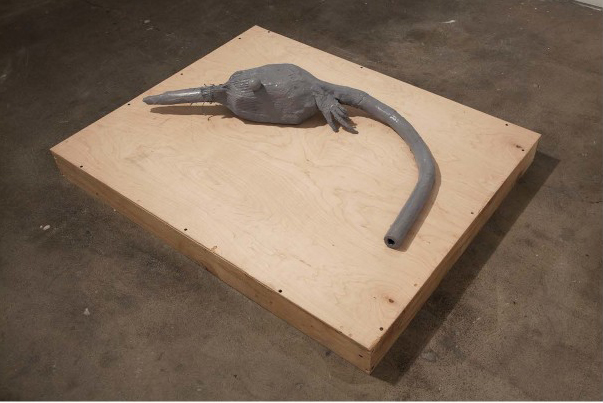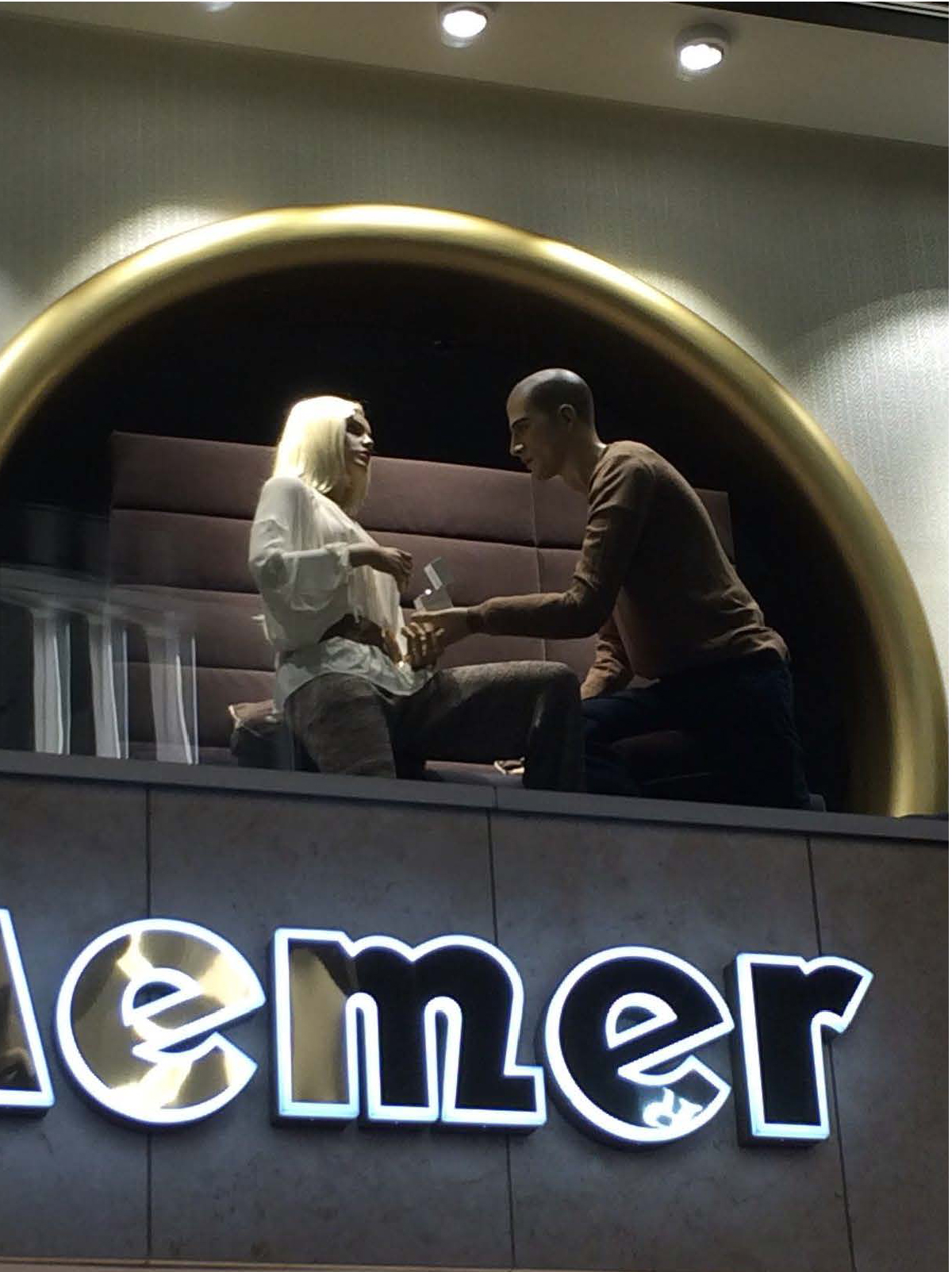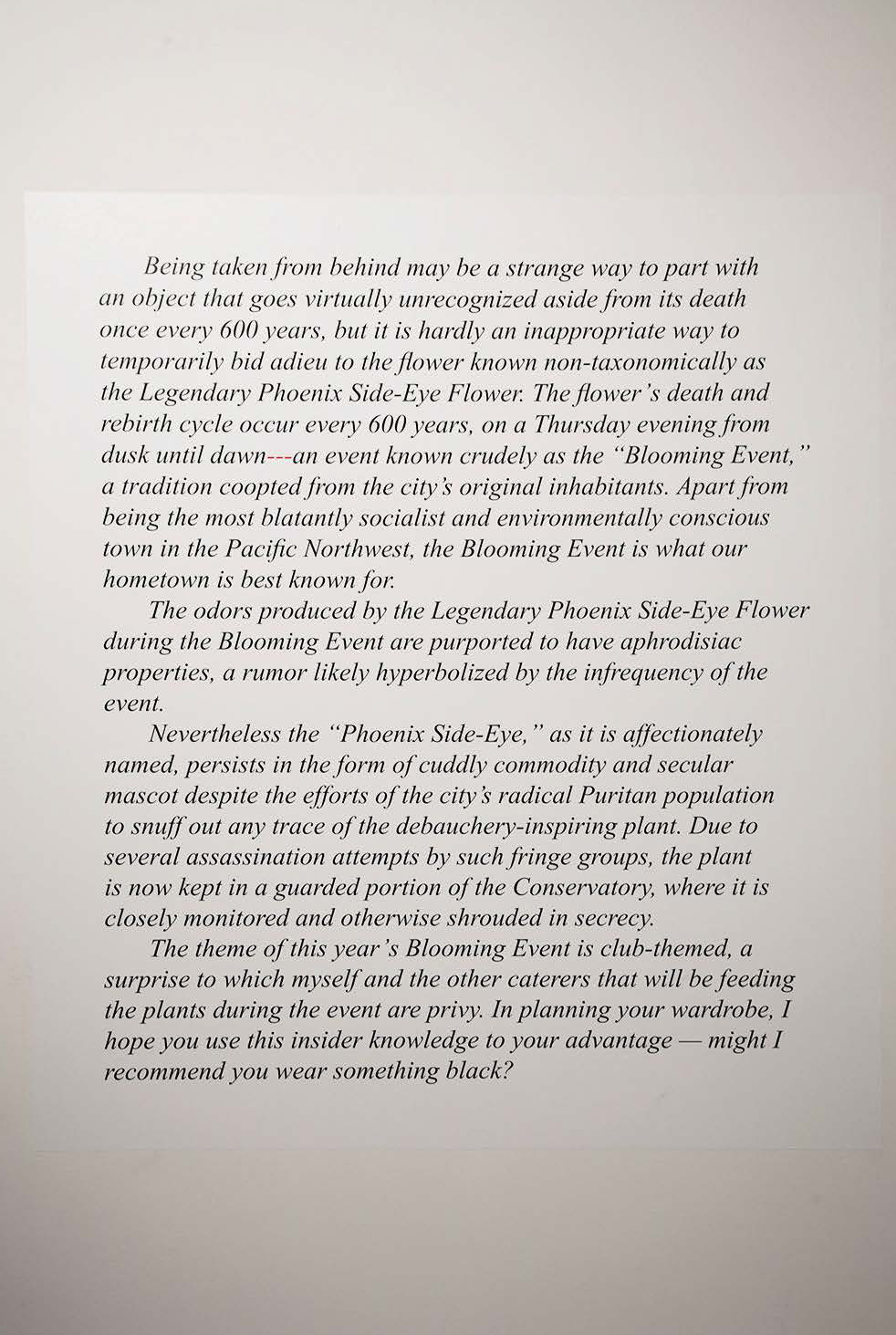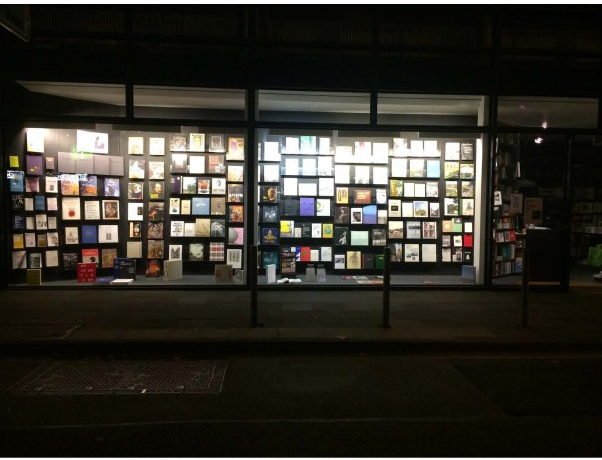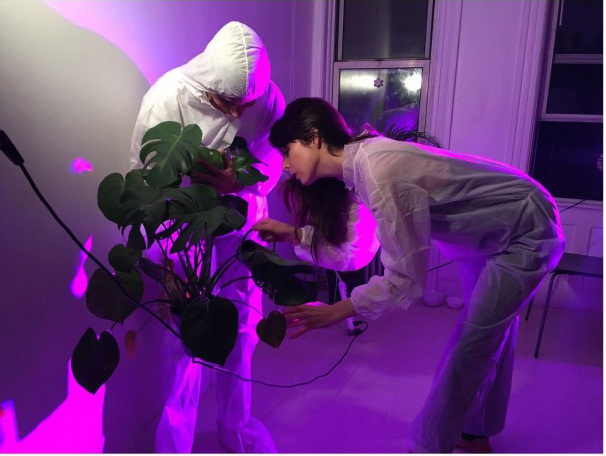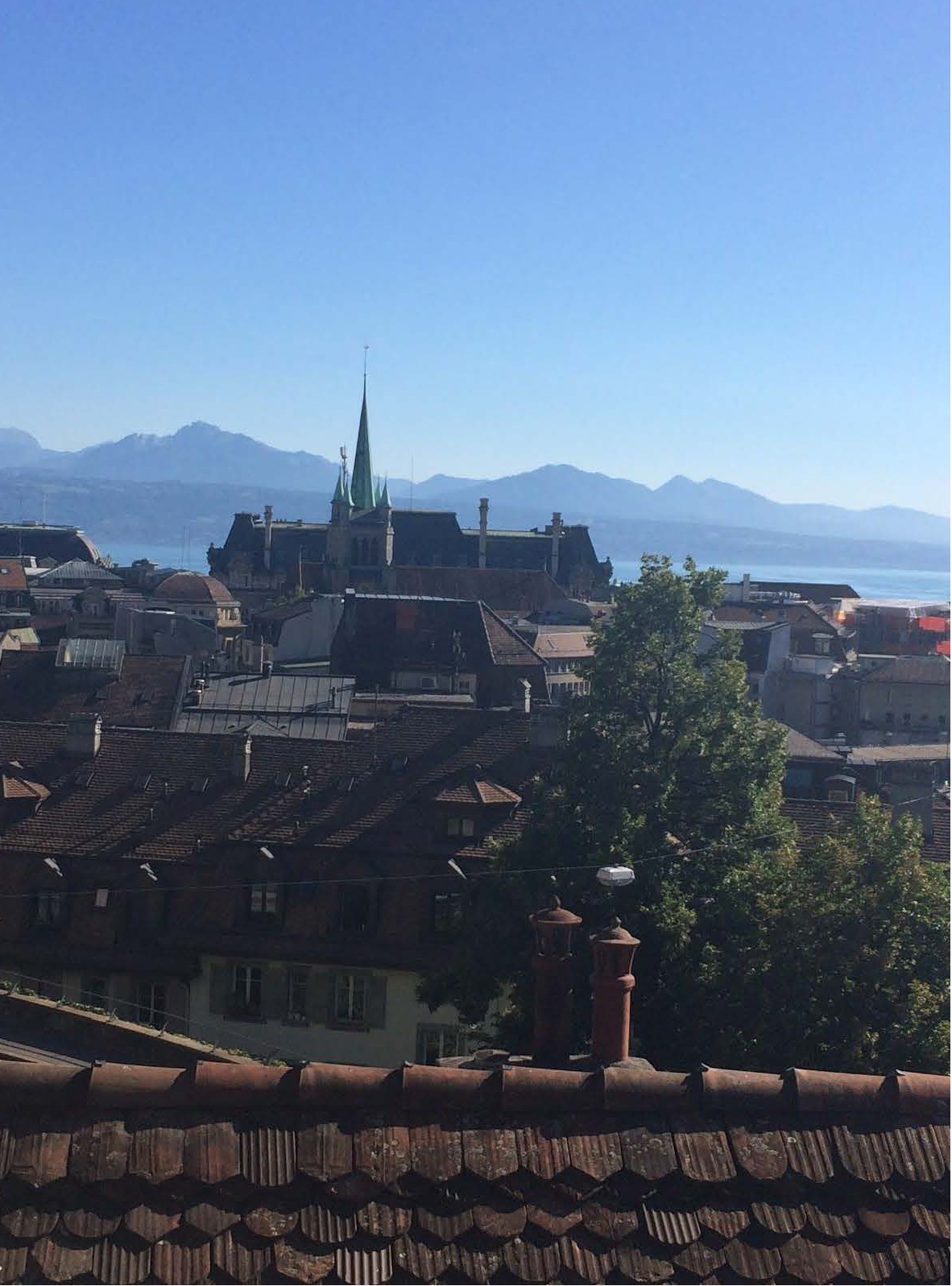Paige Walton
Grant awarded Spring 2016
I am so thankful for the rich, challenging, and beautiful experiences that the Kossak travel grant provided me and was stunned to feel such immediate and profound changes in both myself and my work as a result of my traveling. The Kossak Travel Grant alloted me the ability to travel during the Summer of 2016 and visit the countries of Switzerland and Germany. The purpose of my travel was to fulfill a two-part proposal focused on Martin Kippenberger and “Outsider” artists Gaston Duf, Aloise Corbaz and Jeanne Tripier. During my travels, I completed two different projects specific to each country: the first was to study a museum collection and the second was to explore the idea of making work in the geographic shadow of one of my favorite painters.
I went to Lausanne, Switzerland, to study in the museum and research library of la Collection de l’art Brut and study the works of “outsider” artists Gaston Duf, Alöise Corbaz and Jeanne Tripier, amongst others. On my first visit, I spent over four hours in the museum’s collection. There, I had access to books and works of artI would have never have been able to see elsewhere. Through the collection, I became acquainted with a number of artists that I now consider primary visual influences on both my visual work. In Germany, I visited the old haunts and places of inspiration that Martin Kippenberger frequented during crucial periods of his artistic development. Interviews, documentary films, and the recently published biography, Martin Kippenberger: The Artist and His Families, provided me with the information I needed to create a rough “roadmap” for these destinations, most of which are concentrated in Frankfurt, Cologne, and Berlin. Many of these locations no longer exist as Martin Kippenberger once knew them. The Chelsea Hotel, where I stayed in a budget room during a portion of the trip, was one of Kippenberger’s favorite spots in Cologne, alongside the hotel’s restaurant, Café Central. The hotel now features a new, luxury “Kippenberger Suite” at the top of the hotel as a tribute to the dead artist. In Berlin, I found and visited the location of the original “Kippenberger Buro” -Kippenberger’s response to Andy Warhol’s factory- and discovered that the location now houses an architectural firm.
I visited SO.36, Paris Bar Restaurant (where Kippenberger would meet with other artists, brainstorm, eat and trade his paintings with the owner for food), the Staedelschule where Kippenberger taught, Walther König’s original bookstore (where Kippenberger made daily trips and brought his Staedelschule students to visit) and Galerie Capitain. I found myself able to work and draw easily in the quiet atmosphere of Café Central, but imagined how strange and out of place it would have seemed to hear the sound of Kippenberger’s laugh echoing through the room.
As I walked through empty streets of Berlin and Frankfurt, sketched people and objects, collected hotel stationary, stared through the windows of corporate buildings and sat down at the desk in my hotel room in Cologne, I hoped to feel connected in some way with Kippenberger’s past. However, instead of feeling the spirit of one of my favorite painters, I often felt myself more overwhelmed by the persisting phantoms of the second World War. Germany’s dark history had crossed my mind a few times while I was planning the trip, but I hadn’t anticipated feeling so actively depressed and haunted by country’s re-built metropolitan landscapes or to be so consumed by the thought of my family and my family’s friends being unwillingly taken or forced to flee cities just like the ones I was visiting. Original structures, still intact, loomed like tombs.
“That’s where they used to round up all of the Jews to take them to the concentration camps,” said my friend Zoë one night as we walked along a wet, dirt path back to her apartment in Frankfurt. She was pointing at a bank building somewhere in the modest skyline. As I let my own feet become caked in mud, the idea of inserting myself into Kippenberger’s shoes in order to see as he did suddenly seemed inherently flawed. We would never experience Germany the same way.
However, my travels to both countries provided inspiration in ways that I did not anticipate. The longer I stayed, the more I was profoundly impacted by the small differences in life abroad, particularly in the ways in the spirit of environmentalism is so prominent. As a more or less stranger in these cities, I found myself able to let go of my preconceived notions about what kind of artist I was and leap hungrily into new territory. Much of the work I created during my travels ended up taking on a written form. I had dabbled in writing in the past but had never taken it as a serious endeavor or approached it as frequently as I found myself doing while I was traveling. I retreated to my laptop or notebook as a place of solace and reflection at the end of the day and to pass time on the train rides between cities. Disparate written fragments seemed to form a cohesive whole as I began developing a surreal world in which characters could live. Upon my return to the States, the writing I began in Germany became the foundation for the book and paintings that are the central focus of thesis project and installation. My thesis exhibition, which took place the fall following my return from Europe consisted of this book, Blooming Event, and sculptures illustrating objects directly from the text.
